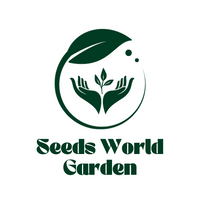Quantity: 35+ Seeds
Color: As picture
Free Shipping and Buy 2 Get 1 Free
1. Begonia is a genus of flowering plants in the family Begoniaceae, commonly known as begonias. They are native to moist subtropical and tropical climates, such as Central and South America, Africa and Asia. Begonia have attractive foliage and flowers, making them popular in gardens and as indoor plants.
2. The leaves of begonias are usually large and oval, and come in a variety of colors, including green, red, pink, orange, and silver. The flowers can be white, pink, red, or yellow, and are held in clusters on tall stems.
3. Begonia seeds are small, round, and black in color. They are often sold in packets of mixed varieties, and can be planted indoors or outdoors. The seeds can be started in small pots or trays, and are usually ready to be transferred to a larger pot once they have sprouted.
4. The care of begonias is fairly straightforward. They require moist, well-draining soil, and should be kept in a sunny location. Too much water can cause root rot, so it is important to keep an eye on the soil moisture levels. Fertilizer should be applied every few weeks to encourage healthy growth.
5. Grains are a type of cereal crop that is grown for its edible seeds. Grains are a staple in many diets around the world, and are a good source of protein, fiber, vitamins, and minerals. Grains such as wheat, corn, and rice are used to make bread, cereals, pasta, and other food products. Grains can also be eaten in their whole form, or ground into flour.
How to Grow Your :
1. Soak in water for 24 to 48 hours before you t them. This allows moisture to penetrate the coat and leads to swelling of the ’s parts to spur germination.
2. Find a location with well-drained, organic-rich, sandy or silt loam and with a minimum average temperature of about 60 degrees Fahrenheit during the t’s early growth. The most favorable temperature range is between 75 to 80 degrees. The t should ideally receive six hours of sun per.
3. Till the soil to rid it of weeds and to increase air circulation. Apply compost to the soil after tilling.
4. Place two or three in a hole about ½ to 1 inch deep in the soil along a fence or under a 6-foot-tall trellis form. The holes should be 15 to 23 inches apart and rows 3 to 5 feet apart.You can also start in small plastic pots in a commercial soil mix.
Shipping:
All orders Free Shipping and Buy 2 Get 1 Free. Normally North American delivery time will take 7-14 days (shipping delays due to large orders will add 1-3 weeks depending on time). Other areas please wait 14-28 days for the order to arrive.
RETURN POLICY
We have a 30-day return policy, which means you have 30 days after receiving your item to request a return.


